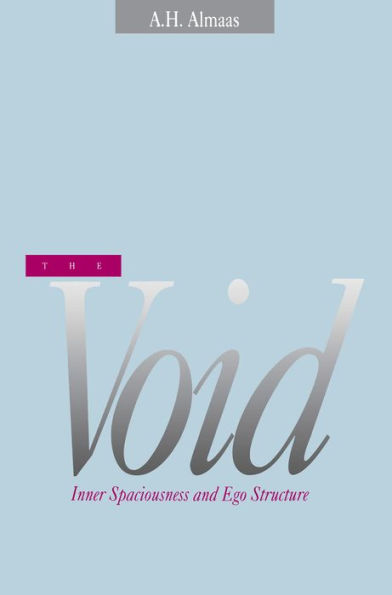

eBook
Related collections and offers
Overview
In this book, the founder of the Diamond Approach brings together concepts and experiences drawn from contemporary object relations theory, Freudian-based ego psychology, case studies from his own spiritual practice, and teachings from the highest levels of Buddhist and other Eastern practices. He challenges us to look not only at the personality and the content of the mind, but also at the underlying nature of the mind itself.

Product Details
| ISBN-13: | 9780834825598 |
|---|---|
| Publisher: | Shambhala |
| Publication date: | 09/05/2000 |
| Series: | Diamond Mind |
| Sold by: | Penguin Random House Publisher Services |
| Format: | eBook |
| Pages: | 192 |
| File size: | 266 KB |
About the Author
Read an Excerpt
From
Chapter 8: Inner Space and Spatial Extension
Inner space is, of course, not the usual physical space, and is not tied only to body images. It is affected by self-boundaries that are more emotional and psychological in nature, as illustrated in Larry's case in the previous chapter. There is a correspondence on the ontological level to the relation between the self-image and the body-image. In other words, just as self-image includes body-image in object relations theory, so in the experience of space,
inner psychological space includes the notion of space as spatial extension.
Inner space is not restricted to spatial extension, just as self-image is not restricted to body-image, which is analogous to spatial extension.
Here we can appreciate how the findings of object relations theory regarding the relationship between self-image and body-image help us to understand more clearly the concept of inner space, and to extend our insight into the nature of the mind as space. This inner space is bigger, more open, more encompassing than the notion of space as spatial extension. Focusing on the dissolution of the boundaries of the body-image, which are mental analogues of physical boundaries, tends to prejudice us towards seeing space as spatial extension.
But dissolving these boundaries, which are mental in nature, helps us open the experience of space to other dimensions that are more psychological. We see that spatial openness is only one dimension in inner space.
We will show later that by deepening our understanding of inner space, and by finding in it more dimensions of openness, we will be able to expand our knowledge of object relations and gain more insight into the psychic structure.
In particular, we will be able to explore on a more fundamental level the nature of identity, of the self, and its relation to self-image. We will be able to extend the findings of object relations theory to an understanding of the ontological nature of the ego, a question that has not yet been approached in traditional psychoanalysis.
This notion of space as openness in more dimensions than the spatial will help us to construct a theory about inner space and self-image. First, however, we must say more about this new notion of space. As the experience of space repeats,
deepens, and expands in the gradual process of dissolving self-boundaries, the individual becomes aware of more subtle kinds of boundaries. He becomes aware of and can dissolve boundaries regarding the depth and extent of his feelings,
the kinds and types of feelings and sensations he can have, the extent of his awareness of both mind and body, and the categories of possible experiences of himself and the world.
Space brings about expansion in the qualities of our senses, our sensations, and our mental capacities. It deepens our intuition. It expands our awareness into new dimensions of ourselves, some we would never have conceived could exist. It brings new capacities for perception and experience. In addition, space has the surprising and powerful capacity of expanding itself, continuously increasing the openness and dissolution of boundaries, allowing ever-greater understanding of ourselves and our minds.
Table of Contents
Introduction to the Diamond Mind Series
i
Introduction to the Void
v
PART
ONE The Void and The Self
1. The
Mind
1
2. Depth
Psychology and the Mind
4
3. Ego
Psychology and the Mind
7
4. Object
Relations Theory
10
5. Self-Image and Boundaries
14
6. Self-Image and Space
17
7. Self-Image and Body-Image in Relation to Space
24
8. Inner
Space and Spatial Extension
30
9. Self-Image as the Structuralization of Space
33
10. The
Psychodynamic Approach to Space
37
11. Discussion of Technique
41
12. Phenomenology of Space
55
PART
TWO The Void and Transformation
13. Space and Essence
71
14. Space and Sexuality
79
15. Space and Inner Change
103
PART
THREE The Void: Expansion or Deficiency
16. Deficient
Emptiness
111
17. Space and Deficient Emptiness
117
18. The
Genesis of Deficient Emptiness
126
19. Emptiness
Is Emptiness
135
PART
FOUR The Grades of Emptiness
20.
The
Grades of Emptiness
143
Appendix:
Space, Representations and Being
151
References 159
